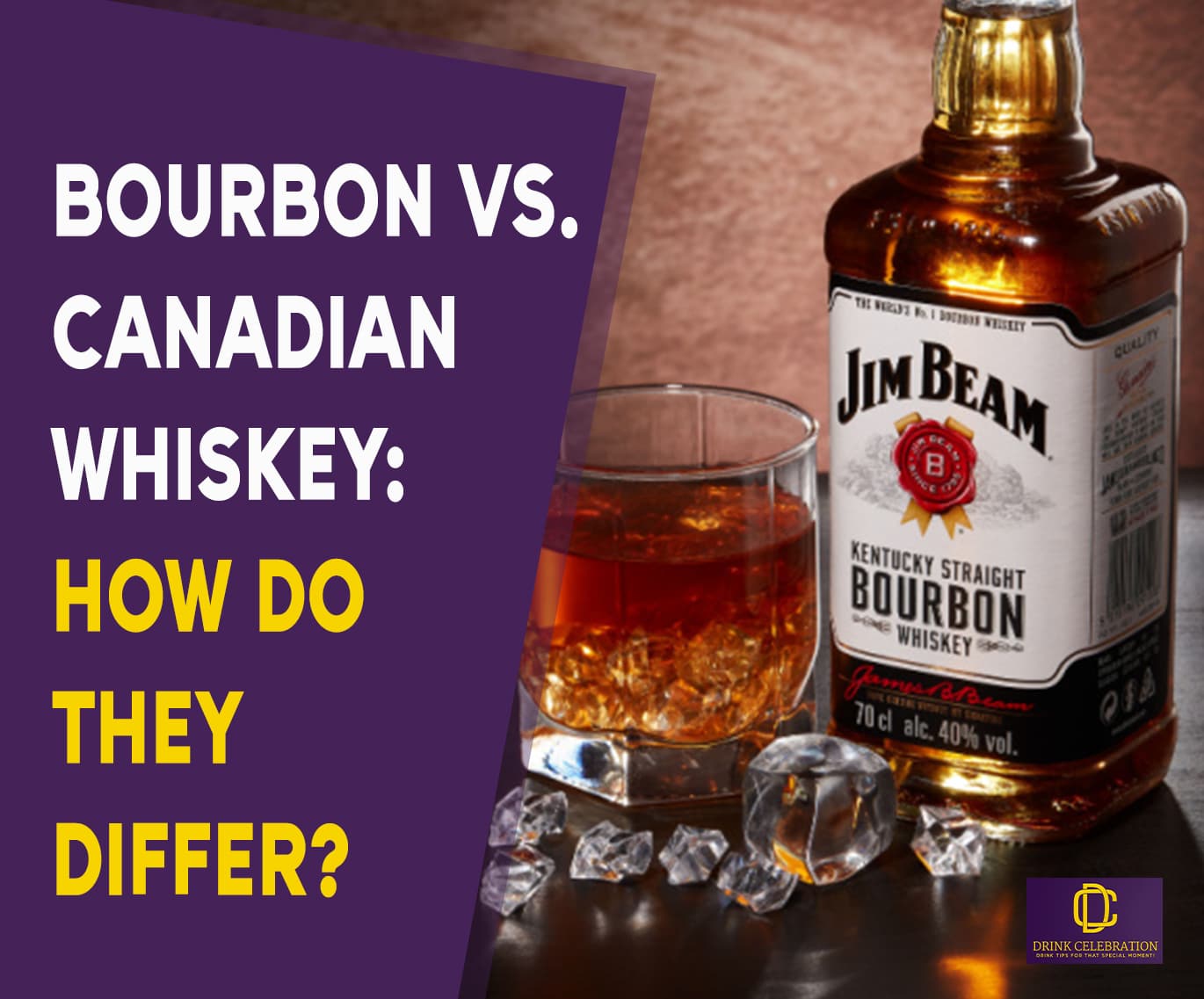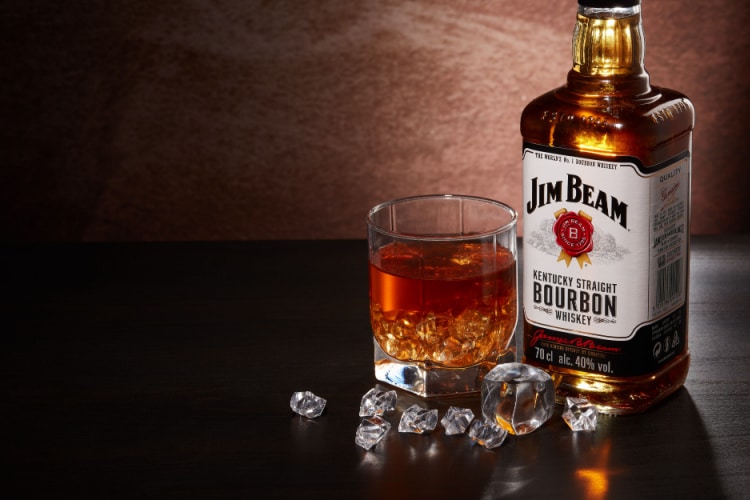The world of whiskey is tricky and diverse, as it features spirits with such delicate differences in taste and flavor. Today, we’ll take a closer look at Bourbon and Canadian whisky. Is there a difference between the two?

The Difference Between Bourbon and Canadian Whisky
The main difference between Bourbon and Canadian whisky is that Bourbon is made in the US, while Canadian whiskey is produced and distilled in Canada. Flavor-wise, you can expect a sweet and smooth taste from Bourbon and a more intense and rigid feel from Canadian whisky.
The production of Bourbon is subject to more regulations than that of Canadian whisky. For example, Bourbon must be aged in new, charred oak barrels. On the other hand, Canadian whisky uses charred, uncharred, new, or used barrels.


Comparison Chart
| Bourbon | Canadian Whiskey | |
|---|---|---|
| Origin | USA | Canada |
| Aging | New, charred oak barrels | Charred, uncharred, new, or used oak barrels |
| Mash Bill | Grains combined to make a mash bill | Grains are individually mashed |
| Flavor | Soft, sweet, and warm | Rugged, sharp, and spicy |
| Labeling | With an E – ‘WhiskEy’ | Without an E – ‘Whisky’ |
Similar Comparison: Tennessee Whiskey vs Bourbon
Origin
Bourbon is an American specialty. But, while you can find it anywhere in the US, good old Kentucky is the state most famous for producing this liquor.
Canadian whisky is a Canadian specialty, exclusively made within the country.
Aging
One of the rules for producing Borbon is that it must age in new, charred oak barrels for at least two years. Distillers can only label it as “straight Bourbon” after two years. Moreover, it must be bottled with at least 40 percent ABV.
Canadian whisky doesn’t have to be aged in a new barrel. It can also age in old and uncharred oak barrels, which infuse more flavors into the spirit. It’s usually aged, blended, and aged again. While the Canadian whisky process rules are not as strict as Bourbon’s, there are still regulations to follow. The government required that the liquor be aged in small wood for at least three years exclusively in Canada. The 40 percent ABV goes for Canadian whisky as well.
Mash Bill
When producing Bourbon, distillers must use at least 51% corn. They can also combine it with wheat, barley, and rye to make a mash bill. The grain components will influence the flavor. For example, if the combination has more rye, the spirit will taste spicier, while more wheat gives a more gentle, fluffy flavor.
Canadian whisky follows a different process. Instead of combining grains, each one is individually mashed, fermented, and distilled before blending everything. Distillers usually create Canadian whisky with corn and rye.
Taste
While they’re both spirits, Bourbon and Canadian whisky have distinct flavors.
American Bourbon tends to be smoother and sweeter because of the high percentage of corn used in the mash bill. It might taste like it has a hint of vanilla and caramel, and you’ll surely feel the warmth of it.
Canadian whisky tastes sharper and spicier due to the high amount of rye. Hence, it’ll feel more intense with a spicy finish.
Labeling
Have you noticed how some liquors are spelled whiskey with an E, while others are spelled whisky without that letter? It’s not a spelling mistake but a distinct label.
Labels with an E come from a country with that letter. For example, American whiskey and Irish whiskey are spelled with an E because America and Ireland have an E.
On the other hand, if the liquor’s origin country doesn’t have the letter E, you won’t see that letter on the label. Consider Japanese whisky, Canadian whisky, and so on.
Flavorings
Bourbon and Canadian whisky can have extra flavorings.
Straight Bourbon can’t contain any additional flavorings, colorings, and other spirits. But if the liquor is labeled “blended bourbon,” it could have extra components that could change the way it tastes. However, 51% of the final spirit must still be pure Bourbon.
For Canadian whisky, there’s a 9.09% rule. It means colorings and flavorings must not exceed 9.09% of the final mix. The spirit must also follow the minimum aging time before adding anything extra.
Final Thoughts
While both use grains, like corn, rye, barley, and wheat, they differ in other aspects, including their aging process, origin, taste, labor, and flavorings. Also, when drinking them, you won’t have the same experience and feel. So even though they’re both best when drunk neat, you’ll surely spot the difference.
We hope this article answers all your questions. If you’ve got more thoughts about these spirits, let us know in the comments below. All that’s left now is for you to enjoy a glass of top-notch liquor.